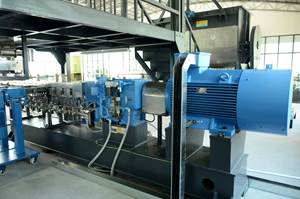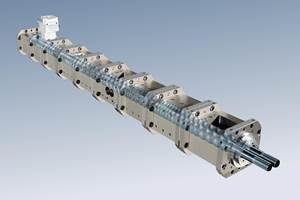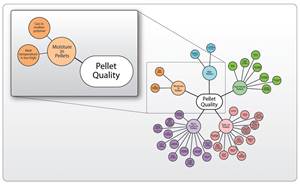Time to Step Up
Join the “conversation” about the value to society of the plastics industry.
I was at an association meeting recently when the conversation turned—as it inevitably does at these sorts of get-togethers—toward the numerous environmental challenges our industry faces. You know the list: attacks on bags, foamed PS, bottles, and now straws, etc.; and of course, the “ocean plastics” dilemma. One-by-one, at the gathering I attended, plastics industry executives discussed these issues and talked about what they—as individuals and companies—could do to reverse this growing public anti-plastic sentiment.
As folks were talking, my mind wandered and I heard a mental voice repeating what I have believed for years: “People in our industry do a great job of talking among themselves but struggle to get the word out to the masses.” The Plastics Industry Association (PLASTICS) has endeavored to change the conversation about our business with the launch of the website thisisplastics.com, which I wrote about in greater detail in the April 2018 issue. Both PLASTICS and the Plastics Division of the American Chemistry Council have done yeoman’s work—with lots more in the pipeline, I am sure—to “change the conversation,” but I think we need more input from you processors if we are really going to change how the public perceives plastics.
It’s estimated that our industry employs close to 1 million people. I’d guess that with roughly 20,000 plastics processing plants in the U.S., perhaps as many as half of those people are in facilities like yours, turning pellets into parts. So for you, there’s a lot at stake. These threats may focus directly on the products you make. If not, maybe yours will be next. Are you engaged at all in the efforts of change the conversation?
If not, I think you can take the first step my talking more to us. Full disclosure: It’s in the best interests of Plastics Technology Magazine to hear from processors. We feature plant-tour type stories that we call On-Site every issue that focus on processors. Our last editorial page every issue (Processor’s Edge) details specific strategies deployed by processors to solve a problem or gain a competitive edge. Information about processor activities is also peppered throughout this magazine (and on PTonline.com), in its Starting Up and Close-Up departments. And just this month, we have a first-hand account from a molder using thermal imaging technology.
All wonderful stuff, and we—not just our magazine, but our industry—need more of it. We need more processors using the resources available in thisisplastics.com to advocate for our industry. I’d like to see more processors (and OEMs) step up and join PLASTICS. We’d certainly like to see more processors engage with us as we attempt to shine a light on molders, extruders, and thermoformers who make remarkable and ingenious products and engage in best manufacturing processors.
But we sometimes run into stumbling blocks getting access to processing plants. On many occasions, when I’ve reached out to a company I know of or heard about, the response has been, “Where is the benefit for us to feature our company in a magazine that my competitors read? I don’t want them to know what I’m doing.”
The benefits are numerous. Some are warm and fuzzy … you can position yourself as a thought leader among your peers. But others are more tangible. You could reprint the article, for example, and figure out a way—by mail, in person, at an open house—to get it into the hands of local high-school students. Or perhaps you can put a call into the friendly editor of your local newspaper (maybe our youth does not read newspapers much anymore, but their parents do, and besides all newspapers have websites), tell them about the article, and encourage them to do one of their own.
I think efforts like this—over time—will begin to change the mindset people have about our industry. Who knows, it might even address the skills gap by getting younger people interested in pursuing careers in our business.
Related Content
Sustainability Among the Many Niches at Niche Polymer
Founded in 1987, Niche Polymer continues to grow—both organically and through acquisition—by focusing its product-development efforts on ever-changing market needs. Adding value to both industrial and post-consumer scrap is a growing part of this effort.
Read MoreLFT-D Thrives in Automotive and Other Durables
Teijin Automotive acquires its 10th direct long-fiber thermoplastic system as demand for this technology soars.
Read MoreHow to Configure Your Twin-Screw Barrel Layout
In twin-screw compounding, most engineers recognize the benefits of being able to configure screw elements. Here’s what you need to know about sequencing barrel sections.
Read MoreThe Path to Pellet Perfection
In underwater pelletizing, numerous variables in the equipment, process and material affect pellet shape, consistency and quality factors such as fines. Defining the “perfect” pellet depends on the conditions of end use, and achieving that ideal requires understanding of the causes of imperfections.
Read MoreRead Next
How Polymer Melts in Single-Screw Extruders
Understanding how polymer melts in a single-screw extruder could help you optimize your screw design to eliminate defect-causing solid polymer fragments.
Read MoreUnderstanding Melting in Single-Screw Extruders
You can better visualize the melting process by “flipping” the observation point so that the barrel appears to be turning clockwise around a stationary screw.
Read MoreProcessor Turns to AI to Help Keep Machines Humming
At captive processor McConkey, a new generation of artificial intelligence models, highlighted by ChatGPT, is helping it wade through the shortage of skilled labor and keep its production lines churning out good parts.
Read More























